You’re taking off makeup one day and suddenly notice something different – are those fine lines around your eyes? You panic and then settle down and immediately start looking for anti-aging products. As you begin your research, you’re most likely to come across a term almost everywhere you look – retinol.
Since this term is so widespread, it’s natural to wonder what it is – and if it’s good for you. So today, we bring you a complete guide on retinol in skincare and whether it’s worth all the hype. No spoilers here, so read on to find out! In this post, we will talk about how to use retinol in skin care. Along with that, we will also talk about when to use retinol in the skincare routine.

Your Ultimate Guide to Retinol in Skincare
Retinol is a derivative of Vitamin A, one of the most commonly found ingredients in anti-aging products today. The anti-aging benefits are due to retinoic acid, the active agent in retinol. Retinoic acid is also known as tretinoin, and it is what makes retinol so easily absorbed. Retinol comprises small molecules that go deep beneath the skin’s surface into the dermis, the layer beneath the epidermis. This is one of the reasons why retinol ins skin care packs the punch your skin needs!
Retinol helps the skin retain collagen and elastin, maintaining that youthful appearance. When applied to the skin, the retinoic acid in retinol moves through the cells in the dermis, binding on the cell nuclei and promoting the growth of new cells. It also neutralizes free radicals and blocks the production of the enzyme that breaks down collagen.
Are retinol and retinoids the same?
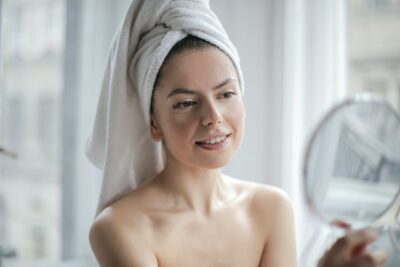
‘Retinol’ and ‘retinoids’ sound similar, and that’s because they are! They’re both derivatives of Vitamin A, and retinoic acid is the active agent in both. As a result, both can be used in anti-aging and other skincare products, but there are still some differences.
- Intensity – Retinols are weaker and gentler on the skin, while retinoids are more intense and stronger.
- Availability – Due to their strength, retinoids are usually available with a prescription, while retinol is available over the counter.
Retinoids were initially meant to treat skin problems like psoriasis and acne. However, it was found to have other benefits like reducing hyperpigmentation and smoothening skin, after which it entered the mainstream skincare market. Here is a look at the benefits of retinol in more detail.
Benefits of Retinol in Skincare
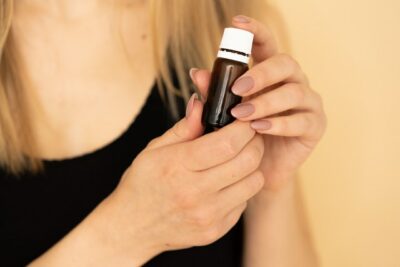
Anti-aging
When retinol in skincare routine is used, it is known that collagen and elastin proteins are essential for skin looking plump and youthful. However, as we age, the production of these slows down, reducing skin elasticity and leading to the appearance of fine lines and wrinkles.
Retinol can penetrate deeper into the layers of the skin, where it can boost the production of collagen and elastin. A study found that just 0.1% retinol can reduce wrinkles on the face by over 63% and near the eyes by nearly 39%.
Another way retinol makes skin look younger is by increasing cell turnover rate. Retinol helps get rid of the older skin cells and brings younger cells to the surface, improving the overall appearance of your skin.
Even Complexion
Retinol’s exfoliating effect on the skin helps in evening out skin texture, making it smoother. It also works hard to fight signs of sun damage, like sun spots and photoaging. Retinol can reduce the appearance of scars and hyperpigmentation like melasma by bringing newer skin cells to the surface. The result is brighter, younger-looking skin that glows.
Clear Skin
As was its original purpose, retinol and retinoids work well against acne. Retinol promotes cell regeneration and helps unclog pores and clear any debris lodged in them. The result is fewer breakouts, fewer blackheads, and much clearer skin. By constantly refreshing skin, it ensures that the clarity of skin is maintained in the future. This also makes skin more receptive to the ingredients in other products you apply.
When to use retinol in skincare routine
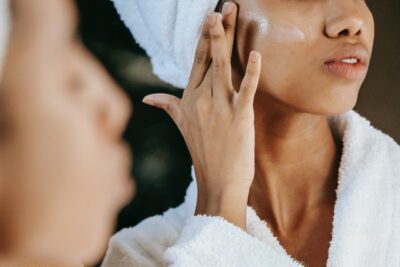
Although retinol is considered something to use against visible signs of aging, skin experts recommend starting to use retinol in the mid to late 20s so that you can delay the onset of fine lines and wrinkles. Retinol is suitable for all skin types, although sensitive skin may need to be more careful.
Retinol can be used as creams or serums, with unique products tailored for the eye area. The most commonly available concentrations are 0.025%, 0.05%, and 0.1%, with the intensity increasing as the concentration rises. Retinol can be easily bought over the counter, while retinoids are usually available for producing a prescription.
When looking for suitable retinol for you, it’s essential to look for a product that says explicitly ‘retinol’ and not ‘pro-retinol,’ ‘retinyl propionate,’ or similar terms, as these are not as effective. Many retinol today come mixed with moisturizers, so they are gentler on the skin. For the eye area, go with a milder concentration in cream form. You can also choose a gel version if you have acne-prone skin.
Getting the most out of retinol
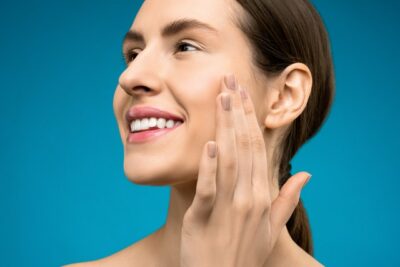
Want to get more out of retinol? It ideally needs to be applied every day, and it can take about 12 weeks to see any significant change. However, retinol is best used at bedtime since they are sensitive to sunlight, which can deactivate the retinoic acid. Before bed, wash your face with a gentle cleanser and pat dry. You now have two options to apply your retinol product:
- Option 1: Apply the retinol product and wait 30 minutes before applying moisturizer.
- Option 2: The sandwich method – Apply moisturizer first, then follow up with retinol and more moisturizer
The second option here is gentler on the skin without losing the retinol’s efficacy. Apply only as much product as you need, focusing on affected areas. When choosing a moisturizer to pair with your retinol, opt for one with hyaluronic acid and ceramides. Avoid pairing Vitamin C with retinol – they don’t work well together.
What happens when you use retinol in skincare routine
Another point to remember is that since retinol brings the new skin cells to the fore, your skin can be a little delicate for a while and more prone to sun damage. This is why experts recommend using a broad-spectrum sunscreen with an SPF 30 for at least 30 days to prevent photodamage.
Retinols can feel a little strong for a beginner. Start with a low concentration. Start by applying retinol thrice a week when you start using the product. It best suits a PM routine in skincare. You can then take it to alternate nights and every day and later increase the concentration if your skin can tolerate it. In most cases, the skin builds tolerance and adapts much more readily to the retinol.
Things to remember when using Retinol in Skincare
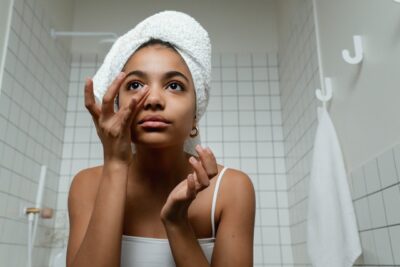
Retinol is considered safe for use by everyone. It has the approval of the Food and Drug Administration (FDA). Retinol can have a few side effects, especially for first-time users. These usually appear in the form of irritation, redness, or itchiness. This resolves independently, although some people may experience other symptoms like peeling skin, slight discoloration, photosensitivity, or breakouts.
Some conditions can make you more prone to side effects when using retinol, like these:
- Too much sun exposure
- Using a high concentration
- Using too much too frequently
- Using more than one retinol product at a time
- Skin conditions like eczema, rosacea, or psoriasis
It is also important to know when to apply retinol in skincare routine. If you have sensitive skin, are undergoing treatment for a medical condition, or have a chronic illness, it’s best to consult your doctor before introducing retinol into your skincare routine. Pregnant and breastfeeding women are advised to avoid retinol – they can try safer alternatives like bakuchiol. You can try the Absolut Serum by Daughter Earth which is packed with bakuchiol. The benefits of retinol in skincare are immense and it’s time to add retinol in skincare routine.
Must Read: Choosing the right skin care products
Leave a Reply